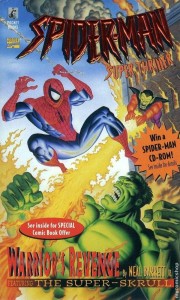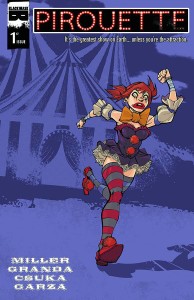 As I mentioned a couple of weeks back, in my post on the zombie apocalypse series Afterlife with Archie, I’ve become a comic book reviewer for the news site Comics for Sinners. And occasionally I come across a horror series that I think might interest you Panatics, so I decided to now and then reproduce my C4S reviews here at Zwieback Central. (And yes, it helps to update this blog.) So this time around I look at the first issue of Black Mask Studios’ Pirouette. Read on to find out more…
As I mentioned a couple of weeks back, in my post on the zombie apocalypse series Afterlife with Archie, I’ve become a comic book reviewer for the news site Comics for Sinners. And occasionally I come across a horror series that I think might interest you Panatics, so I decided to now and then reproduce my C4S reviews here at Zwieback Central. (And yes, it helps to update this blog.) So this time around I look at the first issue of Black Mask Studios’ Pirouette. Read on to find out more…
Confession time: I’ll admit I experienced some trepidation when I was asked to review this title from Black Mask Studios, but that was entirely due to confusing writer Mark L. Miller with Kick-Ass shock-and-awe hypemeister Mark Millar. Not being a fan of Millar’s work, I couldn’t imagine what Hollywood pitch this latest work would turn out to be. But then I took a second look, and realized a completely different writer was involved (an unfortunate circumstance that I’m sure Miller is sick of by now), so I started reading.
 I’m glad I took that second look.
I’m glad I took that second look.
Pirouette is the eponymous star of the comic, an extremely sad, 16-year-old clown who dreams of running away from the circus because of the abuse—both physical and psychological—that she suffers at the hands of her fellow carnies, as well as her parents; to say she’s the resident punching bag would be an understatement. And yet there’s a spark of hope in Pirouette that a better life exists for her, somewhere beyond her nightmarish existence. And if what one of the other clowns has told her is true, there may be a chance for that spark to blossom into a flame…
The first impression one gets from Miller’s tale is that he’s wearing his Ray Bradbury influence on his sleeve—Samwell’s Circus of Curios and Wonders seems straight out of Cooger & Dark’s Pandemonium Shadow Show in Bradbury’s classic novel, Something Wicked This Way Comes. And that’s not a bad thing—given the extremes of hyperkinetic art layouts and ultraslow, “write for the trade” padded scripting that dominate comics these days, Miller has found an easy balance between the two, with a story that moves at its own pace without being derivative of Bradbury’s work.
Although billed as a horror miniseries, there’s nothing supernatural in evidence in this first issue; the horror solely comes from watching Pirouette’s mistreatment from a cast of characters you’d like to see run over by the train that transports the circus through its 1930s’ Midwest America setting. From all I know there may be no supernatural elements to the story, and that would be fine—Pirouette works just as well as a character-driven tale.
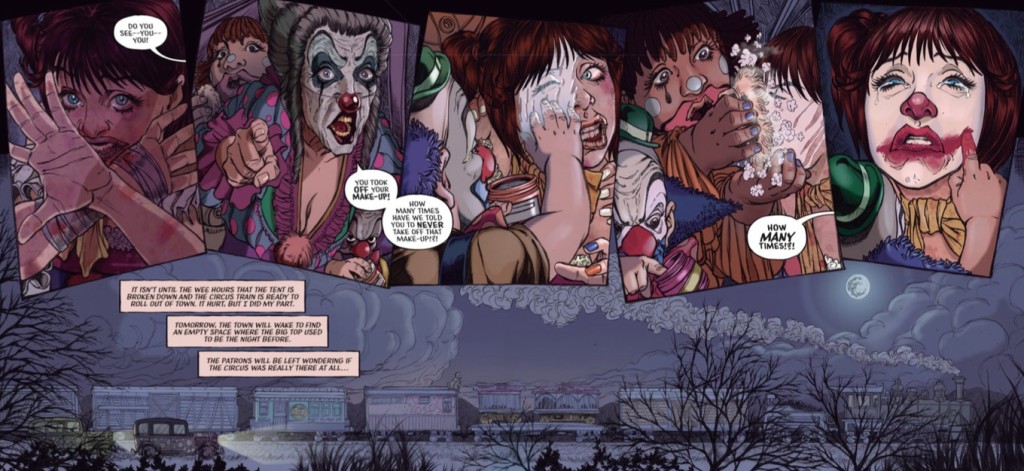
The art by Miller’s creative partner, Carlos Granda, is breathtaking. There’s a hint of Angel Medina (Spawn), a hint of Bernie Wrightson (Swamp Thing), and a touch of old-school EC comics to his style, and it all combines for top-notch storytelling pages that range from wide-screen double-splashes to intimate close-ups.
Bottom line? With its winning combination of Bradbury-esque influences and incredible art, Pirouette is a miniseries definitely worth a look for horror fans and comic fans.
Pirouette #1
Written by Mark L. Miller
Art and cover by Carlos Granda
Publisher: Black Mask Studios
32 pages • full color
$3.99 U.S.
On sale now

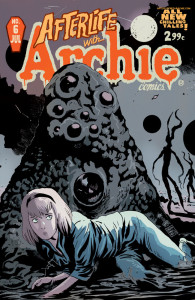 Just in time for Halloween, here’s something different for this site: Me recommending a project I had nothing to do with. Okay, maybe not all that different—after all, I’ve posted
Just in time for Halloween, here’s something different for this site: Me recommending a project I had nothing to do with. Okay, maybe not all that different—after all, I’ve posted  The Day of the Triffids, by John Wyndham: First published in 1951, it’s a fast-paced, enjoyable science fiction adventure that would seem to have been an influence on the quasi-zombie apocalypse film 28 Days Later (a patient in a hospital wakes up to find himself apparently the only unaffected person in a ravaged London). Except instead of zombies, you have carnivorous plants hunting a human population that’s been mostly stricken blind by the light of a passing comet. But as the lead characters quickly learn, it’s not the Triffids that pose the greatest threat, but the other unaffected humans…
The Day of the Triffids, by John Wyndham: First published in 1951, it’s a fast-paced, enjoyable science fiction adventure that would seem to have been an influence on the quasi-zombie apocalypse film 28 Days Later (a patient in a hospital wakes up to find himself apparently the only unaffected person in a ravaged London). Except instead of zombies, you have carnivorous plants hunting a human population that’s been mostly stricken blind by the light of a passing comet. But as the lead characters quickly learn, it’s not the Triffids that pose the greatest threat, but the other unaffected humans…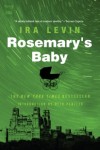 Rosemary’s Baby, by Ira Levin: The 1968 Mia Farrow–starring film adaptation is a horror masterpiece, and Zoe (Guardians of the Galaxy) Saldana starred in a 2014 television miniseries remake that was well received, but Ira Levin’s 1967 source novel is a brisk, entertaining masterpiece of its own. Rosemary and Guy Woodward move into an NYC apartment building with a long history of witchcraft and devil worship—and the current residents have plans for Rosemary… Apart from cultural references that firmly set the story in 1960s New York, the story remains as enjoyably horrific and humorously macabre as it did almost fifty years ago.
Rosemary’s Baby, by Ira Levin: The 1968 Mia Farrow–starring film adaptation is a horror masterpiece, and Zoe (Guardians of the Galaxy) Saldana starred in a 2014 television miniseries remake that was well received, but Ira Levin’s 1967 source novel is a brisk, entertaining masterpiece of its own. Rosemary and Guy Woodward move into an NYC apartment building with a long history of witchcraft and devil worship—and the current residents have plans for Rosemary… Apart from cultural references that firmly set the story in 1960s New York, the story remains as enjoyably horrific and humorously macabre as it did almost fifty years ago.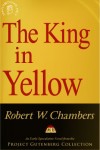 The King in Yellow, by Robert W. Chambers: This 1895 short story collection influenced not only writers like H. P. Lovecraft, Grant Morrison, and Stephen King, but also served as a major plot point in the first season of HBO’s acclaimed series True Detective, starring Matthew McConaghey and Woody Harrelson. The conceit is that The King in Yellow, a fictitious two-act play, drives people mad when they read the second act (which is never reproduced in the book). The first four stories in the collection are linked to the play. Download The King in Yellow e-book for free from
The King in Yellow, by Robert W. Chambers: This 1895 short story collection influenced not only writers like H. P. Lovecraft, Grant Morrison, and Stephen King, but also served as a major plot point in the first season of HBO’s acclaimed series True Detective, starring Matthew McConaghey and Woody Harrelson. The conceit is that The King in Yellow, a fictitious two-act play, drives people mad when they read the second act (which is never reproduced in the book). The first four stories in the collection are linked to the play. Download The King in Yellow e-book for free from 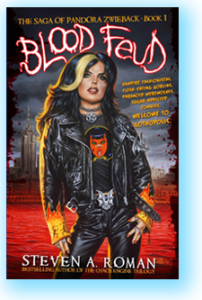 Blood Feud: The Saga of Pandora Zwieback, Book 1: What, I shouldn’t plug my first Pan novel—on the very site dedicated to the series it’s part of? 😉 With its sequel, Blood Reign, soon to make its long-awaited appearance, this is the perfect time to catch up on the start of Pan’s debut adventure (if you or your book-loving friends haven’t already read it, that is). Warring vampire clans! Fallen angels! Monster hunters! Romance! Danger! Pick up a copy and find out why HorrorNews.net called Blood Feud “far and away one of the best young adult supernatural fantasy novels released in the last few years.”
Blood Feud: The Saga of Pandora Zwieback, Book 1: What, I shouldn’t plug my first Pan novel—on the very site dedicated to the series it’s part of? 😉 With its sequel, Blood Reign, soon to make its long-awaited appearance, this is the perfect time to catch up on the start of Pan’s debut adventure (if you or your book-loving friends haven’t already read it, that is). Warring vampire clans! Fallen angels! Monster hunters! Romance! Danger! Pick up a copy and find out why HorrorNews.net called Blood Feud “far and away one of the best young adult supernatural fantasy novels released in the last few years.”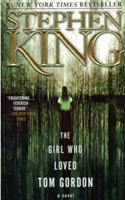 The Girl Who Loved Tom Gordon, by Stephen King: Nine-year-old city girl Trisha McFarland wanders off a forest path after arguing with her mom and gets completely lost—then things get really bad. Something stalks her through the woods, and it’s only her love for real-life (now former) Boston Red Sox relief pitcher Tom “Flash” Gordon that keeps Trisha going through all her freaky adventures.
The Girl Who Loved Tom Gordon, by Stephen King: Nine-year-old city girl Trisha McFarland wanders off a forest path after arguing with her mom and gets completely lost—then things get really bad. Something stalks her through the woods, and it’s only her love for real-life (now former) Boston Red Sox relief pitcher Tom “Flash” Gordon that keeps Trisha going through all her freaky adventures.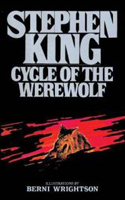 Cycle of the Werewolf, also by Stephen King, with spectacular full-color illustrations by horror comics master Berni Wrightson. There’s a werewolf on the loose in Tarker Mills, Maine, and the only person who can stop it is 11-year-old Marty Coslaw, who’s a paraplegic. But even though he’s confined to a wheelchair, Marty’s smart enough, and brave enough, to discover the werewolf’s identity. Now if he can just kill it before it kills him…
Cycle of the Werewolf, also by Stephen King, with spectacular full-color illustrations by horror comics master Berni Wrightson. There’s a werewolf on the loose in Tarker Mills, Maine, and the only person who can stop it is 11-year-old Marty Coslaw, who’s a paraplegic. But even though he’s confined to a wheelchair, Marty’s smart enough, and brave enough, to discover the werewolf’s identity. Now if he can just kill it before it kills him…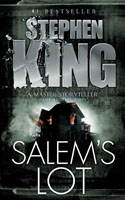 ’Salem’s Lot, by Stephen King: Before his ode to wolfmen, King wrote this scary tale of vampires in small-town America. Writer Ben Mears returns to ’Salem’s Lot (original name: Jerusalem’s Lot), the small Maine town where he grew up—just in time to face a sudden outbreak of vampirism. It’s Dracula living in The House on Haunted Hill, and the horror never lets up. Forget the emo, sparkly kind of bloodsuckers and read about honest-to-goodness monsters striking from the shadows.
’Salem’s Lot, by Stephen King: Before his ode to wolfmen, King wrote this scary tale of vampires in small-town America. Writer Ben Mears returns to ’Salem’s Lot (original name: Jerusalem’s Lot), the small Maine town where he grew up—just in time to face a sudden outbreak of vampirism. It’s Dracula living in The House on Haunted Hill, and the horror never lets up. Forget the emo, sparkly kind of bloodsuckers and read about honest-to-goodness monsters striking from the shadows.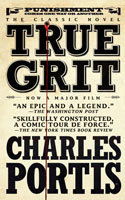 True Grit, by Charles Portis: Yes, I’ve got a Western on this list, and it’s the very novel that served as the basis for two movie adaptations. Although the films were more focused on John Wayne’s and Jeff Bridges’s respective portrayals of U.S. marshal “Rooster” Cogburn, the novel really makes it clear that this is the story of Mattie Ross, a 14-year-old girl searching for her father’s killer. Mattie’s a strong female character who knows what she wants, with a sense of humor so dry it makes her a little too straitlaced at times, but it’s a fast-paced, enjoyable adventure.
True Grit, by Charles Portis: Yes, I’ve got a Western on this list, and it’s the very novel that served as the basis for two movie adaptations. Although the films were more focused on John Wayne’s and Jeff Bridges’s respective portrayals of U.S. marshal “Rooster” Cogburn, the novel really makes it clear that this is the story of Mattie Ross, a 14-year-old girl searching for her father’s killer. Mattie’s a strong female character who knows what she wants, with a sense of humor so dry it makes her a little too straitlaced at times, but it’s a fast-paced, enjoyable adventure. Something Wicked This Way Comes, by Ray Bradbury: A classic of dark-fantasy fiction. As Halloween approaches, Cooger & Dark’s Pandemonium Shadow Show rolls into Green Town, Illinois. The “dark carnival” holds some ominous and terrifying surprises, and when weird and evil events start to affect the people of Green Town, it’s up to two 13-year-old boys—Jim Nightshade and his best friend, William Halloway—to save everyone. Bradbury’s prose is almost poetic at times, and the story sucks you in from page one. If you’ve never read it before, do so now; if you have read it before, read it again.
Something Wicked This Way Comes, by Ray Bradbury: A classic of dark-fantasy fiction. As Halloween approaches, Cooger & Dark’s Pandemonium Shadow Show rolls into Green Town, Illinois. The “dark carnival” holds some ominous and terrifying surprises, and when weird and evil events start to affect the people of Green Town, it’s up to two 13-year-old boys—Jim Nightshade and his best friend, William Halloway—to save everyone. Bradbury’s prose is almost poetic at times, and the story sucks you in from page one. If you’ve never read it before, do so now; if you have read it before, read it again.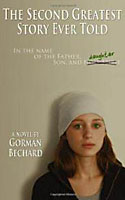 The Second Greatest Story Ever Told, by Giorman Bechard: Not a horror tale but a humorous novel about the sort-of Second Coming—only this time God sends down his daughter, Ilona, to straighten out the modern-day world and introduce the Eleventh Commandment: Be Kind. Born in Cooperstown, New York (home of the Baseball Hall of Fame), she becomes a New York Mets fan, appears on the David Letterman show, becomes a spokesperson for a soda company, and tries to update the Catholic Church (which the Pope isn’t too thrilled about). It’s funny and dramatic, and was the novel that opened my eyes to how a writer can put aspects of themselves into their characters—a major influence on how I approached my writing from then on. (It’s available for Kindle and Nook, by the way.)
The Second Greatest Story Ever Told, by Giorman Bechard: Not a horror tale but a humorous novel about the sort-of Second Coming—only this time God sends down his daughter, Ilona, to straighten out the modern-day world and introduce the Eleventh Commandment: Be Kind. Born in Cooperstown, New York (home of the Baseball Hall of Fame), she becomes a New York Mets fan, appears on the David Letterman show, becomes a spokesperson for a soda company, and tries to update the Catholic Church (which the Pope isn’t too thrilled about). It’s funny and dramatic, and was the novel that opened my eyes to how a writer can put aspects of themselves into their characters—a major influence on how I approached my writing from then on. (It’s available for Kindle and Nook, by the way.)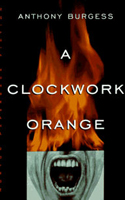 A Clockwork Orange, by Anthony Burgess: This one is really more for adults and older teens because of the sex, violence, and drug use involved, but it’s a fascinating, gritty tale about Alex, a sociopathic teen, and how society tries to “fix” him. Burgess plays with the language, inventing words and phrases that, at first, are a little difficult to decipher; but as the story progresses, you’re quickly able to understand what Alex is talking about. And if you’ve ever seen the Stanley Kubrick movie adaptation, you can’t help but “hear” Alex’s first-person narration in the voice of Malcolm McDowell, the actor who played him.
A Clockwork Orange, by Anthony Burgess: This one is really more for adults and older teens because of the sex, violence, and drug use involved, but it’s a fascinating, gritty tale about Alex, a sociopathic teen, and how society tries to “fix” him. Burgess plays with the language, inventing words and phrases that, at first, are a little difficult to decipher; but as the story progresses, you’re quickly able to understand what Alex is talking about. And if you’ve ever seen the Stanley Kubrick movie adaptation, you can’t help but “hear” Alex’s first-person narration in the voice of Malcolm McDowell, the actor who played him. Carmilla, by Joseph Sheridan Le Fanu: One of the first female vampire tales, originally published in 1872, and an inspiration for Bram Stoker when he created the vampire brides in Dracula. It’s also considered to be the first lesbian vampire story, because of Carmilla’s obsession with her latest friend/victim, the protagonist Laura, but there’s no sex involved, just impassioned pleas for love. SWC released its version of this Gothic dark fantasy last year, and it features black-and-white illustrations by Eliseu Gouveia, artist of the comic The Saga of Pandora Zwieback #0. You can find information on the SWC edition
Carmilla, by Joseph Sheridan Le Fanu: One of the first female vampire tales, originally published in 1872, and an inspiration for Bram Stoker when he created the vampire brides in Dracula. It’s also considered to be the first lesbian vampire story, because of Carmilla’s obsession with her latest friend/victim, the protagonist Laura, but there’s no sex involved, just impassioned pleas for love. SWC released its version of this Gothic dark fantasy last year, and it features black-and-white illustrations by Eliseu Gouveia, artist of the comic The Saga of Pandora Zwieback #0. You can find information on the SWC edition 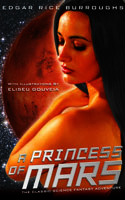 A Princess of Mars, by Edgar Rice Burroughs: The first in the ten-book “John Carter of Mars” novel series, originally published in 1912, and the inspiration for Disney’s 2012 film adaptation, John Carter. A Civil War veteran finds himself transported to the red planet, where he winds up fighting what seems like half its population (both human and alien) for the love of Dejah Thoris—who’s no damsel in distress but a warrior princess! SWC released its own edition this past March and, like Carmilla, the book features black-and-white illustrations by Eliseu Gouveia. Princess is great pulp adventure, and I’m not just saying that because I published a version of it—I tore through the Mars novels back in high school, and they’re still worth reading. You can find information on the SWC edition
A Princess of Mars, by Edgar Rice Burroughs: The first in the ten-book “John Carter of Mars” novel series, originally published in 1912, and the inspiration for Disney’s 2012 film adaptation, John Carter. A Civil War veteran finds himself transported to the red planet, where he winds up fighting what seems like half its population (both human and alien) for the love of Dejah Thoris—who’s no damsel in distress but a warrior princess! SWC released its own edition this past March and, like Carmilla, the book features black-and-white illustrations by Eliseu Gouveia. Princess is great pulp adventure, and I’m not just saying that because I published a version of it—I tore through the Mars novels back in high school, and they’re still worth reading. You can find information on the SWC edition 